A. In the pitch-black waters of the ocean‘s aphotic zone-depths from 1,000m to the seafloor – Rood eyesight does not count for very much on its own. Caves, in addition, frequently present a similar problem: the complete absence of natural light at any time of the day. This has not stopped some organisms from turning these inhospitable environments into their homes, and in the process, many have created their own forms of light by developing one of the stunning visual marvels of the biological universe – bioluminescence.
B. Many people will encounter bioluminescence at some point in their life, typically in some form of a glowworm, which is found on most continents. North and South America are home to the ―firefly‖, a glowing beetle which is known as a glow-worm during its larvae stage. Flightless glowing beetles and worms are also found in Europe, Asia, Australia, and New Zealand. Less common flies, centipedes, molluscs, and snails have bioluminescent qualities as well, as do some mushrooms. The most dramatic examples of bioluminescence. however, are found deep below the ocean‘s surface, where no sunlight can penetrate at all. Here, anglerfish, cookie-cutter sharks, flashlight fish, lantern fish, gulper eels, viperfish, and many other species have developed bioluminescence in unique and creative ways to facilitate their lives.
C. The natural uses of bioluminescence vary widely, and organisms have learnt to be very creative with its use. Fireflies employ bioluminescence primarily for reproductive means – their flashing patterns advertise a firefly‘s readiness to breed. Some fish use it as a handy spotlight to help them locate prey. Others use it as a lure; the anglerfish, for example, dangles a luminescent flare that draws in gullible, smaller fishes which get snapped up by the anglerfish in an automated reflex. Sometimes, bioluminescence is used to resist predators. Vampire squids eject a thick cloud of glowing liquid from the tip of its arms when threatened, which can be disorientating. Other species use a single, bright flash to temporarily blind their attacker, with an effect similar to that of an oncoming car which has not dipped its headlights.
D. Humans have captured and utilized bioluminescence by developing, over the last decade, a technology known as Bioluminescence Imaging (BLI). BU involves the extraction of a DNA protein from a bioluminescent organism, and then the integration of this protein into a laboratory animal through trans- geneticism. Researchers have been able to use luminesced pathogens and cancer cell lines to track the respective spread of infections and cancers. Through BLI, cancers and infections can be observed without intervening in a way that affects their independent development. In other words, while an ultra-sensitive camera and bioluminescent proteins add a visual element, they do not disrupt or mutate the natural processes. As a result, when testing drugs and treatments, researchers are permitted a single perspective of a therapy‘s progression.
E. Once scientists learn how to engineer bioluminescence and keep it stable in large quantities, a number of other human uses for it will become available. Glowing trees have been proposed as replacements for electric lighting along busy roads, for example, which would reduce our dependence on non-renewable energy sources. The same technology used in Christmas trees for the family home would also eliminate the fire danger from electrical fairy lights. It may also be possible for crops and plants to luminesce when they require watering, and for meat and dairy products to ―tell us‖ when they have become contaminated by bacteria. In a similar way. forensic investigators could detect bacterial species on corpses through bioluminescence. Finally, there is an element of pure novelty. Children‘s toys and stickers are often made with glow-in-the-dark qualities, and a biological form would allow rabbits, mice, fish, and other pets to glow as well.
Questions 1-5. Reading Passage 1 has five sections, A-E. Choose the correct headings for sections A-E from the list of headingsbelow. Write the correct number i-ix in boxes 1-5 on your answersheet.
LIST OF HEADINGS
ii. Mushrooms that glow in the dark
iii. Bright creatures on land and in the sea
iv. Evolution’s solution
v. Cave-dwelling organisms
vi. Future opportunities in biological engineering
vii. Nature’s gift to medicine
viii. Bioluminescence in humans
ix. Purposes of bioluminescence in the wild
x. Luminescent pet
1. Section A
2. Section B
3. Section C
4. Section D
5. Section E
Questions 6-9. Choose FOUR letters. A—G. Write the correct letters in boxes 6-9 on your answersheet.
Which FOUR uses are listed for bioluminescence in nature?
A. ways of attracting food
B. tracing the spread of diseases
C. mating signals
D. growing trees for street lighting
E. drug trials
F. defensive tactics
G. a torch to identify food
6………..
7………..
8 ………..
9 ………..
Questions 10-13. Complete the sentences below. Choose NO MORE THAN TWO WORDS from the passage for each answer. Write your answers in boxes 10-13 on your answer sheet
10. The luminescent fluid that a vampire squid emits has a effect on its predator.
11. In order to use bioluminescence in a trans-genetic environment, must first be removed
from a bioluminescent creature.
12. One advantage of BLI is that it could allow researchers to see how a treatment is working without altering or disturbing …………………….
13. In the future, may be able to use bioluminescence to identify evidence on dead bodies.
Reading Passage 2.
CHANGES IN MALE BODY IMAGE
A. The pressures on women to look slender, youthful, and attractive have been extensively documented, but changing expectations for women‘s bodies have varied widely. From voluptuous and curvy in the days of Marilyn Monroe to slender and androgynous when Twiggy hit the London scene in the mid- 1960s, and then on to the towering Amazonian models of the 1980s and the ―heroin chic‖ and size-zero obsession of today, it is not just clothes that go in and out of fashion for women. The prevailing notion of the perfect body for men, however, has remained remarkably static: broad shoulders, a big chest and arms, and rippling, visible abdominal muscles and powerful legs have long been the staple ingredients of a desirable male physique.
B. A growing body of evidence suggests this is changing, however. Rootsteins, a mannequin design company in Britain, has released its newest male model – the Homme nouveau – with a cinched-in 27- inch waist. “To put that into perspective,” says one female fashion reporter, “I had a 27-inch waist when I was thirteen _ and I was really skinny.” The company suggests that the Homme nouveau “redress the prevailing ‘beefcake‘ figure by carving out a far more streamlined, sinuous silhouette to match the edgier attitude of a new generation”.
C. Elsewhere in the fashion industry, the label American Apparel is releasing a line of trousers in sizes no larger than a 30-inch waist, which squeezes out most of the younger male market who have an average waistline over five inches larger. Slender young men are naturally starting to dominate the catwalks and magazine pages as well “No one wanted the big guys,” model David Gandy has said, describing how his muscled physique was losing him jobs. “It was all the skinny, androgynous look. People would look at me very, very strangely when I went to castings.”
D. Achieving such a physique can be unattainable for those without the natural genetic make-up. “I don‘t know that anyone would consider my body archetypal or as an exemplar to work towards,” notes model Davo McConville. “You couldn‘t aim for this; it‘s defined by a vacuum of flesh, by what it‘s not.” Nevertheless, statistics suggest it is not just an obsession of models, celebrities, and the media – more and more ordinary men are prepared to go to great lengths for a slender body. One indication is the growing number of men who are discovering surgical reconstruction. Male breast reduction has become especially popular, in 2009, the year-on-year growth rate for this procedure rose to 44 per cent in the United Kingdom. Liposuction also remains popular in the market for male body reconstructive surgery, with 35,000 such procedures being performed on men every year.
E. Additionally, more men now have eating disorders than ever before. These are characterized by normal eating habits, typically either the consumption of insufficient or excessive amounts of food. Eating disorders are detrimental to the physical and mental condition of people who suffer from them, and the desire to achieve unrealistic physiques has been implicated as a cause. In 1990, only 10% of people suffering from anorexia or bulimia were believed to be male, but this figure has climbed steadily to around one-quarter today. Around two in five binge eaters are men. Women still make up the majority of those afflicted by eating disorders, but the perception of it being a “girly” problem has contributed to men being less likely to pursue treatment. In 2008, male eating disorders were thrust into the spotlight when former British Deputy Prime Minister, John Prescott, admitted to habitually gorging on junk food and then inducing himself to vomit while in office. “I never admitted to this out of the shame and embarrassment,” he said. ―I found it difficult as a man like me to admit that I suffered from bulimia.”
F. In some respects, the slim male silhouette seems to be complementing, rather than displacing, the G. I. Joe physique. Men‘s Health, one of the only titles to weather the floundering magazine market with sales increasing to a quarter of a million per issue, has a staple diet of bulky men on the cover who entice readers with the promise of big, powerful muscles. Advertising executives and fashion editors suggest that in times of recession and political uncertainty, the more robust male body image once again becomes desirable. Academic research supports this claim, indicating that more “feminine” features are desirable for men in comfortable and secure societies, while “masculine” physical traits are more attractive where survival comes back to the individual. A University of Aberdeen study, conducted using 4,500 women from over 30 countries, found a pronounced correlation between levels of public healthcare and the amount of effeminacy women preferred in their men. In Sweden, the country considered to have the best healthcare, 68 per cent of women preferred the men who were shown with feminine facial features. In Brazil, the country with the worst healthcare in the study, only 45 per cent of women were so inclined. “The results suggest that as healthcare improves, more masculine men fall out of favour,” the researchers concluded.
G. Ultimately, columnist Polly Vernon has written, we are left with two polarized ideals of masculine beauty. One is the sleek, slender silhouette that exudes cutting-edge style and a wealthy, comfortable lifestyle. The other is the ‘strong, muscular, austerity-resistant” form that suggests a man can look after himself with his own bare hands. These ideals co-exist by pulling men in different directions and encouraging them to believe they must always be chasing physical perfection, while simultaneously destabilizing any firm notions of what physical perfection requires.
H. As a result, attaining the ideal body becomes an ever more futile and time-consuming task. Vernon concludes that this means less time for the more important things in life, and both sexes should resist the
compulsive obsession with beauty.
Questions 14-20. Reading Passage 2 has eight paragraphs, A-H. Which paragraph contains the following information? Write the correct letter, A-H, in boxes 14-20 on your answer sheet. NB You may use any letter more than once.
14. an opinion on whether body image changes have positive or negative effects
15. a historical comparison of gendered body images
16. a humiliating confession of overeating by a public figure
17. a cosmetic operation that has become increasingly popular
18. a health condition afflicting increasing numbers of men
19. the effect of changing body ideals on a male model
20. an explanation of how living standards affect the desirability of male physiques
Questions 21-26. Do the following statements agree with the information given in Reading Passage 2? In boxes 21—26 on your answer sheet, write:
YES, if the statement agrees with the views of the writer
NO, if the statement contradicts with the view of the writer
NOT GIVEN, if it is impossible to say what the writer thinks about this
21. A thin body is achievable for men regardless of their genes.
22. Male liposuction is more popular than male breast-reduction.
23. Rating disorders harm the mind and body.
24. Women seek help for eating disorders more often than men.
25. Men’s Health has suffered from a downturn in magazine sales.
26. As public healthcare improves, men become more feminine.
READING PASSAGE 3. You should spend about 20 minutes on Questions 27-40. which are based on Reading Passage 3 below.
EATS, SHOOTS AND LEAVES. A BOOK REVIEW
A. The title of Eats, Shoots and Leaves refers to a famously misplaced comma in a wildlife manual that ended up suggesting a panda rather violently ―eats, shoots and leaves‖ instead of eating shoots andleaves. The author of this book, journalist Lynne Truss, is something akin to a militant linguist, dedicating this “zero tolerance” manifesto on grammar to the striking Bolshevik printers of St. Petersburg who, in demanding the same remuneration for punctuation as they received for letters, ended up setting in motion the first Russian Revolution.
B. Some of the books involve humorous attacks on erroneous punctuation. There is the confused Shakespearian thespian who inadvertently turns a frantic plea: “Go, get him surgeons!” into the cheerful encouragement of “Go get him, surgeons!” Street and shop signs have a ubiquitous presence. A bakery declares “FRESH DONUT‘S SOLD HERE” and a florist curiously announces that “Pansy‘s here!” (Is she?). The shameless title of a Hollywood film Two Weeks Notice is reeled in for criticism – “Would they similarly call it One Weeks Notice?”, Truss enquires – and sometimes, as in the case of signs promoting “ANTIQUE‘S” and “Potatoe‘s” – one questions whether we are bearing witness to new depths of grammar ignorance, or a postmodern caricature of atrocious punctuation.
C. Eats, Shoots and Leaves is not just a piece of comedy and ridicule, however, and Truss has plenty to offer on the question of proper grammar usage. If you have ever wondered whether it is acceptable to simply use an “em dash” in place of a comma – the verdict from Truss is that you can. “The dash is less formal than the semicolon, which makes it more attractive,” she suggests. “It enhances conversational tone; and … it is capable of quite subtle effects.” The author concludes, with characteristic wry condescension, that the em dash‘s popularity largely rests on people knowing it is almost impossible to use incorrectly. A truss is a personal champion of the semicolon, a historically contentious punctuation mark elsewhere maligned by novelist Kurt Vonnegut Jr., as a “transvestite hermaphrodite representing absolutely nothing”. Coming to the semicolon‘s defence. Truss suggests that while it can certainly be overused, she refers to the dying words of one 20th century writer: “I should have used fewer semicolons, the semicolon can perform the role of a kind of Special Policeman in the event of comma fights.”
D. Truss has come under criticism on two broad points. The first argument criticises the legitimacy of her authority as a punctuation autocrat. Louis Menand, writing in the New Yorker, details Eats, Shoots and Leaves‘ numerous grammatical and punctuation sins: a comma-free non-restrictive clause; a superfluous ellipsis; a misplaced apostrophe; a misused parenthesis; two misused semicolons; an erroneous hyphen in the word “abuzz”, and so on. In fact, as Menand notes, half the semicolons in the Truss book are spuriously deployed because they stem from the author‘s open flouting of the rule that semicolons must only connect two independent clauses. “Why would a person not just vague about the rules but disinclined to follow them bother to produce a guide to punctuation?” Menand inquires. Ultimately, he holds Truss accused of producing a book that pleases those who “just need to vent” and concludes that Eats, Shoots and Leaves is actually a tirade against the decline of language and print that disguises itself, thinly and poorly, as some kind of a style manual.
E. Linguist David Chrystal has criticised what he describes as a “linguistic purism” coursing through Truss‘ book. Linguistic purism is the notion that one variety of language is somehow more-pure than others, with this sense of purity often based on an idealised historical point in the language‘s development, but sometimes simply in reference to an abstract idea. In The Fight for English: How Language Pundits Ate, Shot and Left, Chrystal – a former colleague of Truss – condemns the no-holds- barred approach to punctuation and grammar. “Zero tolerance does not allow for flexibility,” he argues. “It is prescriptivism taken to extremes. It suggests that language is in a state where all the rules are established with 100 per cent certainty. The suggestion is false. We do not know what all the rules of punctuation are. And no rule of punctuation is followed by all of the people all of the time.”
F. Other detractors of Truss‘ “prescriptivism” are careful to disassociate needless purism from robust and sensible criticism, an oppositional stance they call descriptivism. “Don‘t ever imagine,” Geoffrey K. Pullum on the Language Log emphasises, “that I think all honest attempts at using English are just as good as any others. [ Bad writing needs to be fixed. But let‘s make sure we fix the right things.” In other words, we do not require a dogmatic approach to clean up the misused language. Charles Gaulke concurs, noting that his opposition to “prescriptivism” does not require contending with the existence of standards themselves, but questioning whether our standards should determine what works, or whether what works should determine our standards.
G. Ultimately, it is unlikely the purists and pedagogues will ever make absolute peace with those who see language as a fluid, creative process within which everyone has a role to play. Both sides can learn to live in a sort of contentious harmony, however. Creativity typically involves extending, adapting and critiquing the status quo, and revising and reviving old traditions while constructing new ones. Rules must exist in order for this process to take place, if only for them to be broken. On the flip side, rules have an important role to play in guiding our language into forms that can be accessed by people across all manner of differences, so it is vital to acknowledge the extent to which they can be democratic, rather than merely autocratic in function. Nevertheless, all the regulations in the world cannot stem the natural spring of language, which bursts through rivets and snakes around the dams that linguistic authorities may try to put in place. We should celebrate rather than curse these inevitabletensions.
Questions 27-32. Look as the following statements (Questions 27-32) and the list of people below. Match each statement with the correct person A-E. Write the correct letter A-E in boxes 27-32 on your answer sheet. NB You may use any letter more than once.
27. Mistakes should be corrected on the basis of common sense.
28. No one has legitimacy as an ultimate authority on punctuation use.
29. Eats, Shoots and Leaves is not the type of book it claims to be.
30. The idea that some forms of language can be better than others is wrong.
31. The semicolon has no real purpose.
32. We can ask whether rules are helpful without undermining the need for rules.
List of people
A. Kurt Vonnegut Jr
B. Louis Menand
C. David Chrystal
D. Geoffrey K. Pullum
E. Charles Gaulke
Questions 33-37. Complete the summary below. Choose NO MORE THAN THREE WORDS from the passage for each answer. Write your answers in boxes 33-37 on your answersheet.
Eats, Shoots and Leaves is a book on punctuation by journalist Lynne Truss, who could be described as a 33 ……………………. She dedicates the book to the Bolshevik printers who started the 34 …………………. by protesting for better pay conditions. The book is partly a humorous criticism of incorrect punctuation. Some of the examples are so bad it is possible that they are actually a 35…………………. Truss also guides the reader on correct punctuation usage. She likes the em dash because it is not as 36 ……………………. as the semicolon, for example, but remains a 37 of the latter due to its ability to discipline areas of text that are crowded with commas.
Questions 38-40. Choose THREE letters, A—G. Write the correct letters in boxes 38-40 on your answer sheet.
Which THREE of the following statements form part of the author’s conclusion?
A. Rules prevent the creation of new things.
B. A centralised point of control can effectively guide the flow of language.
C. Both the descriptivists and prescriptivists have important roles to play in language evolution.
D. Disputes over matters of language rules need not be condemned.
E. Prescriptivists and descriptivists are both wrong.
F. Rules help everyone use language and do not merely prescribe usage.
G. An essential part of creativity is the rejection of that which has come before.
38…………….
39 …………….
40 …………….
Would you like to download a copy of the practice test? Please click on the download button below:
VIEW ANSWERS
IELTS Speaking Task Topics
Click on any topic to explore more!
Names

Learn about the importance of names and their cultural significance.
Study / Job
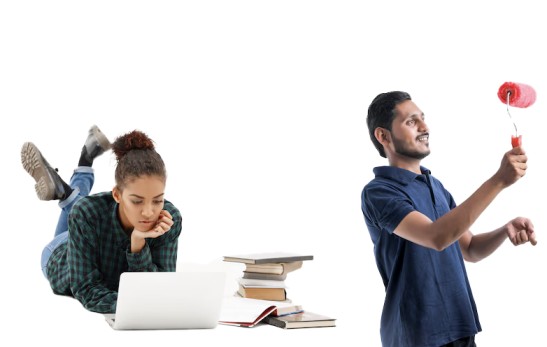
Discuss various aspects of studying and working in different fields.
Hometown

Explore the charm of your hometown and its unique features.
Accomodation

Understand various types of accommodation and living situations.
Weather

Learn about how weather influences daily life and activities.
Time

Discuss the concept of time, its importance, and time management.
Television
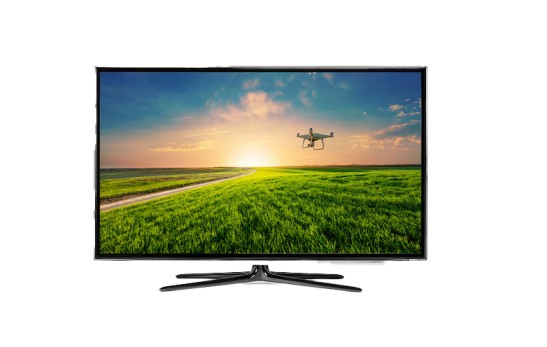
Talk about the role of television in modern entertainment.
Museum

Discuss the cultural importance of museums and historical exhibits.
Holidays

Explore the significance of holidays and different celebrations.
Films

Learn about the impact of films on culture and society.
Leisure Time

Discuss how leisure activities impact personal well-being.
Sport

Talk about the role of sports in health, entertainment, and culture.
Vegetables and Fruits

Discuss the health benefits and importance of fresh produce.
Maths

Explore the role of mathematics in various aspects of life.
Sky

Discuss the beauty and scientific significance of the sky.
Clothes&Fashion

Explore how clothing reflects culture and personal expression.
Weekend

Discuss the importance of weekends and ways people relax.
Reading

Learn about the importance of reading and various reading habits.
Sleep

Explore how sleep impacts physical and mental well-being.
Trees&Plants

Discuss the environmental and health benefits of plants.
Newspaper

Discuss the evolving role of newspapers in the digital age.
Texting

Explore the role of text messaging in modern communication.
Memorising

Learn techniques for improving memory and memorization.
Travelling

Discuss the importance and impact of traveling in modern society.
Communication

Explore the modes and significance of communicating well
Letter&Email

Explore the differences and significance of letters vs. emails.
Swimming

Discuss the benefits of swimming for health and fitness.
Snacks
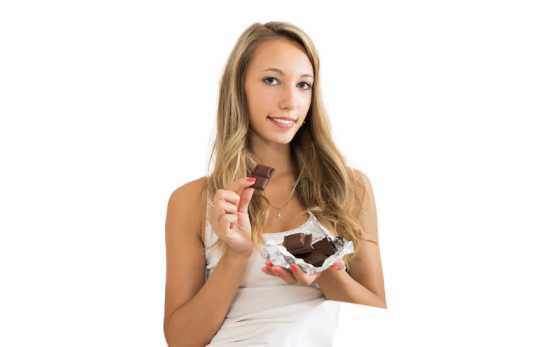
Explore the role of snacks in daily nutrition and lifestyle.
Photography

Discuss photography’s cultural and artistic significance.
Help

Talk about the importance of offering and receiving help.
History

Discuss historical events and their impact on modern society.
Handwriting

Explore the significance of handwriting in education and culture.
Music

Learn about the influence of music on emotions and society.
Colours

Discuss how colours affect perception and mood.
Teachers

Explore the role of teachers in shaping students’ futures.
Being Alone

Talk about the experience and benefits of spending time alone.
Teamwork

Learn the importance of teamwork in professional and social contexts.
Countryside & City

Explore the charm and benefits of living in the countryside.
Social Media

Discuss the impact of social media on society and relationships.
Friends

Explore the importance of friendships in life.
Artificial Intelligence (AI)

Talk about the future of AI and its role in society.
Climate Change

Discuss the causes and consequences of climate change.
Transportation

Explore different modes of transportation in your area.
Sustainable Transportation

Explore ways to make transportation more environmentally friendly.
Space Exploration

Learn about the latest advancements in space exploration.
Shopping

Explore how shopping influences culture and the economy.
Modern Technology

Discuss how modern technology is reshaping society.
Technology

Learn about the role of technology in everyday life.
Sustainable Living

Explore ways to live sustainably for the future of the planet.
Globalisation

Learn about the effects of globalisation on society and economies.
Global Warming

Discuss the causes, effects, and solutions to global warming.
Gender Equality

Explore the importance of gender equality in modern society.
Health and Fitness
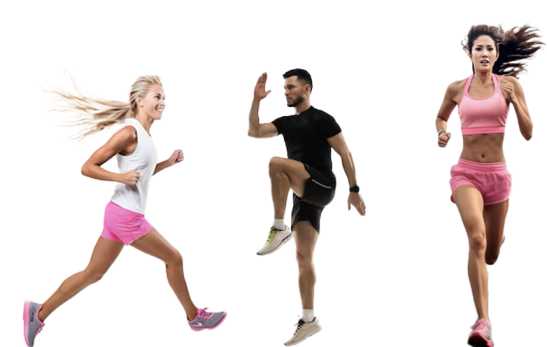
Discuss the importance of maintaining a healthy lifestyle.
Renewable Energy

Learn about renewable energy sources and their impact on the environment.
Cultural Traditions in Kerala

Explore the unique cultural traditions of Kerala, your hometown.
Cultural Traditions in Your Country

Learn about the cultural traditions in your country.
Education System

Discuss the education system in your country and its effectiveness.
Traditional Cuisine

Explore the significance of traditional cuisines in your culture.
Do you need printed IELTS/ OET practice material? Place your order today. Available now for just Rs: 1,100 (including shipping all across India) Contact us at our WhatsApp number: +91 9886926773 to place your order. (Free for LTC students)
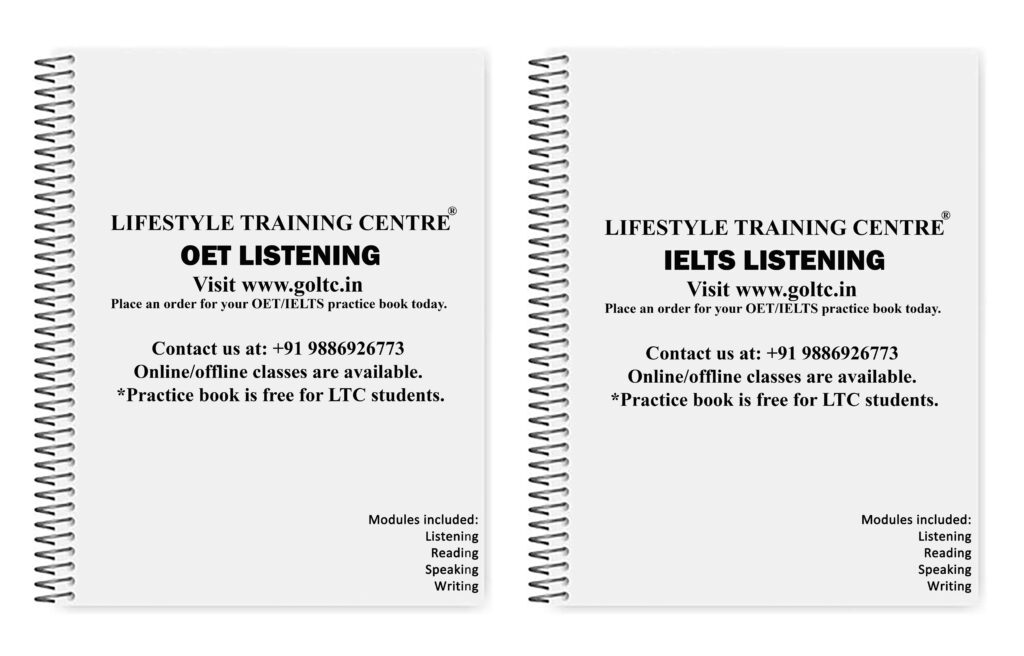
We hope this information has been valuable to you. If so, please consider a monetary donation to Lifestyle Training Centre via UPI. Your support is greatly appreciated.

Would you like to undergo training for OET, PTE, IELTS, Duolingo, Phonetics, or Spoken English with us? Kindly contact us now!
📱 Call/WhatsApp/Text: +91 9886926773
📧 Email: mail@goltc.in
Visit us in person by following the directions on Google Maps. We look forward to welcoming you to the Lifestyle Training Centre.
Follow Lifestyle Training Centre on social media:
Thank you very much!
Would you like to download a copy of the practice test? Please click on the download button below:

